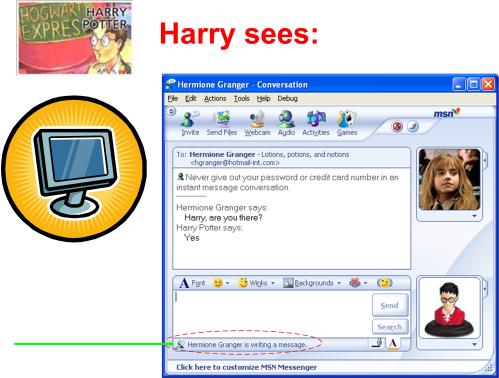During my Microsoft career I had the opportunity to work on a number of projects that resulted in patents for which I am listed as an inventor. Setting aside the issues surrounding software patents and patent trolling in general, what pride I possess in any patent attached to my name has almost nothing to do with the patent itself, the filing and granting of which are largely the work of attorneys. The pride comes from utility of the work that spurred the patent application and my personal contributions to that work.
I care little about the several patents where I am listed as a co-inventor along with Bill Gates — for example, 8,341,405: Access management in an off-premise environment — despite whatever reflected glory there is from my association with him in the patent records. These patents were part of a “forward patenting” project into which I put minimal effort, so I deserve little if any credit for any inventions that ensued.
Conversely, the patent of which I am most proud is for an invention of which I was responsible for the initial conception and implementation and that remains broadly in use today. In the US patent database it is 6,519,639: System and method for activity monitoring and reporting in a computer network, but to everyone else it is known as the “typing indicator.”
I’ve been thinking about this patent recently because today is the twentieth anniversary of the launch of MSN Messenger 1.0, the product in which the typing indicator debuted. While MSN Messenger is no longer in use, the typing indicator was quickly and widely copied and is still a feature of nearly every chat and messaging app. Whether you use Facebook Messenger, iMessage, WhatsApp, Skype, etc., or a customer support website’s chat plug-in, you encounter the animating dots or “[name] is typing…” message that traces its origin to this work.
David Auerbach explained the typing indicator’s history in detail in Slate five years ago, so I won’t repeat it all here. The summary is that prior to MSN Messenger, real-time chat apps either didn’t indicate to you whether the user on the other side was responding to your message (IRC or AIM), or else they showed you every character that the user typed in real time (Unix talk and ICQ). When we were developing MSN Messenger, we believed we could do something better; something that would give you real-time feedback about whether the other user was typing, while being relatively network efficient and providing the other user a semblance of privacy with their thoughts and typos. I designed and coded the implementation for the detection and communication of the typing indicator, and slapped on a rough UI to create a proof of concept. Once we confirmed with self-hosting that it worked well, David and others designed and implemented the polished UI that shipped in MSN Messenger 1.0.
Since the typing indicator patent covers only the detection and communication mechanisms and not the user interface, David and others who worked on the initial implementation are not listed as inventors on the patent. This does not diminish their contributions to the work. MSN Messenger 1.0 became better known for Microsoft’s IM interoperability battle with AOL, which David has described in his essay Chat Wars.
The reason that the typing indicator patent is significant today — July 22, 2019 — is that the initial application was filed on July 21, 1999, the day before Messenger’s launch, and a US patent typically expires twenty years after filing. This should mean that the original patent protection is no longer in effect as of today, except that Microsoft’s lawyers filed several continuation patents, most recently 7,418,495, so the typing indicator patent has a little bit of life left in it.
That said, Microsoft has never pursued anyone for infringing this patent as far as I know (which is not far). In many cases Microsoft has patent cross-license agreements with the the other products’ owners (e.g. Apple in the case of iMessage) that render the issue moot. Also, it’s possible that newer implementations of the feature don’t infringe on the specific claims made by this family of patents, but I have no idea if anyone has bothered to verify this.
Several years after MSN Messenger first launched, still in the pre-smartphone era, I employed the typing indicator as an example when I visited my child’s first-grade class for one of those “What your parent does for a living” sessions. I created these mock-ups of an IM session to demonstrate to six-year-olds how it worked, and printed them poster-sized:


[The text of the typing indicator was then “is writing” because pen support had been added to Messenger.]
The quality of these mock-ups should illuminate why someone other than me implemented the shipping version of the typing indicator UI.